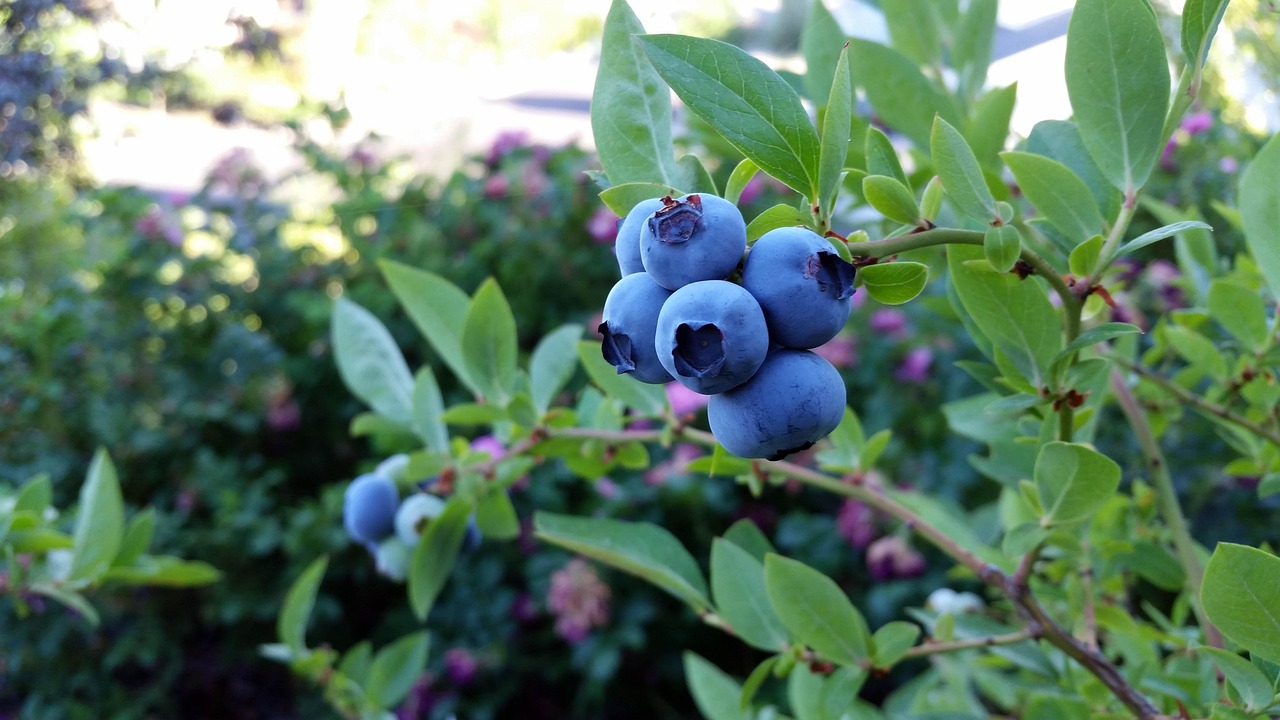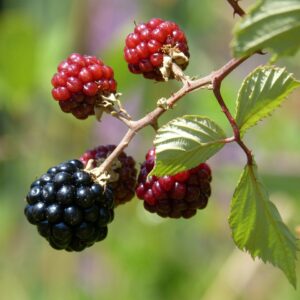Blueberry (Vaccinium spp.) – A Nutritious, Pollinator-Friendly Shrub
Blueberries are deciduous, fruit-bearing shrubs in the heath family (Ericaceae) known for their sweet, antioxidant-rich berries and ornamental appeal. Native to North America, they thrive in acidic, well-drained soils and provide multi-season interest with fragrant white flowers in spring, edible blue berries in summer, and brilliant red-orange foliage in fall.
Flowers: Small, bell-shaped flowers, typically white to pale pink blooms in clusters in early to mid-spring. Attract bees, butterflies, and hummingbirds as key pollinators.
Fruit (Berries): Round, blue to dark purple berries, covered in a fine, powdery bloom. Sweet, juicy, and high in antioxidants and vitamins. Ripen mid to late summer, depending on variety and climate. Eaten by birds, deer, and small mammals if not harvested.
Leaves: Oval-shaped, glossy green leaves, 1 to 3 inches long. Turn red, orange, or bronze in fall, providing seasonal beauty. Smooth margins with a slightly leathery texture.
Stem & Growth Habit: Upright, multi-stemmed shrubs, growing in dense, bushy forms. Highbush Blueberry (Vaccinium corymbosum): 4 to 8 feet tall.
Roots: Shallow, fibrous root system, requiring consistent moisture. Dependent on mycorrhizal fungi for nutrient absorption.
Habitat & Range: Native to North America, found in woodlands, bogs, and acidic soils. Prefers full sun to partial shade and thrives in cool, moist climates. Grows best in acidic soils (pH 4.0 to 5.5), rich in organic matter.
Pollinators & Wildlife: Bees are the primary pollinators, with bumblebees being most efficient. Birds, deer, and small mammals eat the berries. Deer-resistant but may be browsed in winter if food is scarce.
Antioxidant Powerhouse: Blueberries are one of the most nutrient-dense fruits, high in vitamin C, fiber, and anthocyanins (powerful antioxidants).
Adaptable to Different Growing Conditions: Lowbush varieties are ideal for wild landscapes and ground cover. Highbush varieties are better for home gardens and commercial orchards.
Growing Blueberries
Best for edible gardens, pollinator habitats, and naturalized landscapes. Thrives in full sun with moist, well-drained, acidic soil (pH 4.0–5.5). Needs cross-pollination for higher yields—plant at least two different varieties nearby. Mulch with pine needles or peat moss to maintain acidity and moisture. Prune annually in late winter to remove old wood and encourage fruiting.


